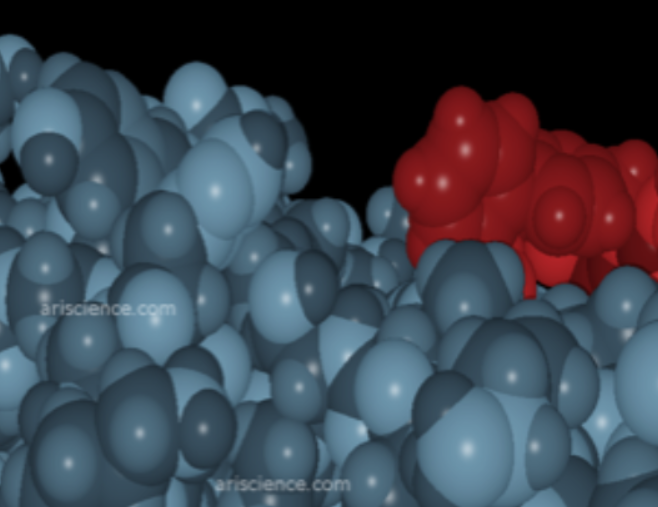
Massachusetts-based biotech company ARIScience uses MGHPCC supercomputers to identify existing drugs able to break up SARS-CoV-2 – the virus that causes COVID-19 – at the molecular level.
Read this story at covid19-hpc-consortium.org
The ongoing rollout of vaccines against COVID-19 has sparked hope of life soon getting back to normal. But vaccines are not the only piece of the pandemic’s jigsaw puzzle. We also need new drugs to fight the disease.
One Massachusetts-based biotech company called ARIScience has used supercomputers to identify existing drugs able to break up SARS-CoV-2 – the virus that causes COVID-19 – at the molecular level. Thanks to computer simulations, followed by validation through statistical analysis on a 1.5MM patient dataset, the researchers have found four FDA-approved drugs that could be repurposed for COVID-19.
These drugs are Metformin, Hydrochlorothiazide, Triamcinolone, and Amoxicillin. They could reduce COVID-19 mortality odds by 25 percent, says the lead researcher, Joy Alamgir. The results are currently undergoing a peer-review process.
While the researchers started by using their own supercomputing cluster, they quickly realized that they needed additional computing resources. They then applied for extra resources via the COVID-19 HPC Consortium – and were granted access to the Texas Advanced Computing Center (TACC) and Pittsburgh Supercomputing Center (PSC).
Separately they requested access to the University of North Dakota, the University of Maine System, and Massachusetts Green High Performance Computing Center (MGHPCC) centers – all of whom granted access to their supercomputing systems. “We would not have completed the simulations ourselves, just because of the sheer computing power needed by our novel algorithms,” says Alamgir.
“One major benefit of the clusters we used is that they are all SLURM-based,” he adds. SLURM stands for Simple Linux Utility for Resource Management – a free, open-source cluster management and job scheduling system for Linux clusters. “It allowed us to easily spread computing load across these clusters without reworking our process. Plus, each node of the clusters allowed a high degree of parallelization, allowing our algorithms to use up 85 to 90 percent of the processing power capacity of the specific nodes we were allocated.”
The first step was to simulate the drugs needed to fight the coronavirus that causes COVID-19. The researchers collated SARS-CoV-2 protein structures of suitable resolution from published sources and used 1,513 in-silico structures of drug active compounds. Then using ARIScience’s novel simulation platform, they performed energy analysis of 11 SARS-CoV-2 proteins at neutral pH against all 1,513 simulated drug active compounds and came up with a shortlist of 18 candidate drugs to assess from the simulation results.
The scientists then took these 18 molecules through one of the largest COVID-19 patient datasets, the National COVID Cohort Collaborative (N3C) – and found that four of them were associated with 25 percent reduction in COVID-19-associated mortality. The team used state-of-the-art statistical techniques to set up patient cohorts, where one was exposed to the drug, and the other one was not.
“As these are existing drugs that are already on the market, this opens the door to additional scrutiny from scientists and clinicians as off-label use for such drugs would be within reach,” says Alamgir. “The results provide evidence that molecular interruption that can slow viral activity a bit can potentially give the body a little bit more time to mount an appropriate viral response.”
The next step for the team is outreach to other clinicians and scientists. “The immediate impact is that our results give information to other researchers on potential approaches they could take to reduce COVID-19 mortality odds,” says Alamgir. And, he adds, the four drugs are not ARIScience’s drugs, so the company has no monetary interest in increasing their usage. “As the research gets validated through additional eyes, it could open the door for a COVID-19 treatment possibility while vaccination campaigns play catchup.”
The research also shows that the new platform could provide high accuracy results in disease pathway interruption, Alamgir says, by interrupting proteins – and could lead to novel approaches to counter-viral, bacterial or oncological pathways.
For example, he says, his team has already started searching for novel and non-novel compounds to address resistant bacterial strains. Bacterial resistance is a huge health challenge that requires new antibiotics but developing them is hard. The strains Alamgir’s team plans to tackle include Methicillin-resistant Staphylococcus aureus (MRSA) bacterium that causes infections in various parts of the human body, vancomycin-resistant Staphylococcus aureus (VRSA), and a bacterium called Mycobacterium tuberculosis, whose resistant strains are staging a comeback for TB – an ages-old scourge.
Checking the Medicine Cabinet to Interrupt Covid-19 at the Molecular Level MGHPCC News